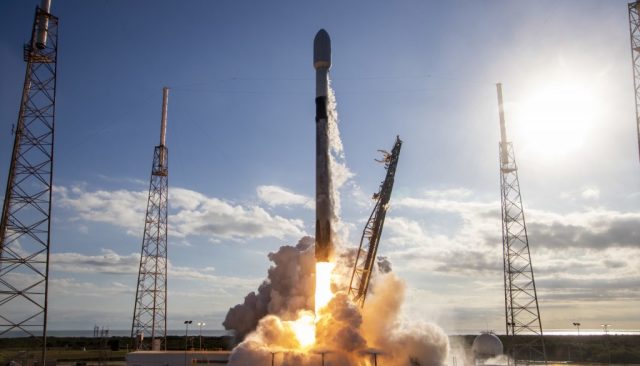Washington. May 16. INTERFAX-The Falcon 9 heavy launch vehicle on Sunday, Moscow time, successfully launched another batch of 52 mini-satellites into low-Earth orbit, designed to continue the deployment of the global Internet coverage of the Starlink system, the developer company SpaceX said.
"The withdrawal of the satellites has been confirmed," the report says.
This is the 28th launch of a group of Internet satellites since May 2019 as part of the Starlink project. Taking into account the current satellites, the SpaceX orbital constellation already consists of 1,675 spacecraft. The previous batch of 60 Starlink satellites was launched on May 9.
The rocket also launched the Tyvak-0130 nanosatellite for astronomical observations in the optical spectrum and a small Capella radar satellite equipped with a synthetic aperture radar in the X-band, which provides photographs of the Earth's surface with a resolution of about 50 cm.
The launch was carried out on Saturday at 18: 56 East Coast time (on Sunday at 01: 56 Moscow time) from Launch Complex 39A of the Kennedy Space Center (Florida).
Approximately 1 hour and 38 minutes after the launch of the rocket, all the satellites were put into the specified orbit.
Meanwhile, the first reusable stage of the SpaceX launch vehicle, which was used for the launch for the eighth time, 8 minutes 28 seconds after launch, made a controlled vertical landing on the automatic floating platform Of Course I Still Love You, which was located in the Atlantic about 630 km from the Cape Canaveral spaceport.
In addition, special rescue sea vessels had to fish out of the water two wings of the fairing of the head of the rocket, which after separation descended by parachute. Reusing the fairing saves SpaceX up to $6 million on its rocket launches.
The company is currently the largest satellite operator in the world.

